
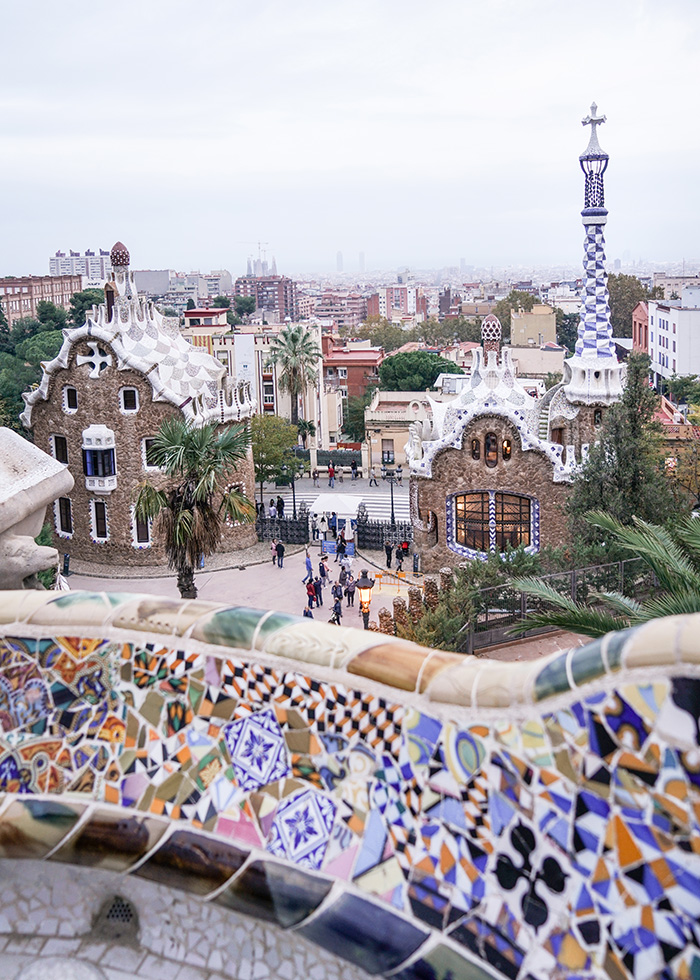
Parc Guell was originally designed as a housing complex upon the request of Eusebi Guell, a friend and supporter of Antoni Gaudi. Although the construction of a housing complex was never completed, nowadays it is appreciated as a unique fairy tale park. In 1984, it was declared a World Heritage Site by UNESCO, and since then it has become a popular tourist attraction and a favorite park of Barcelona citizens.
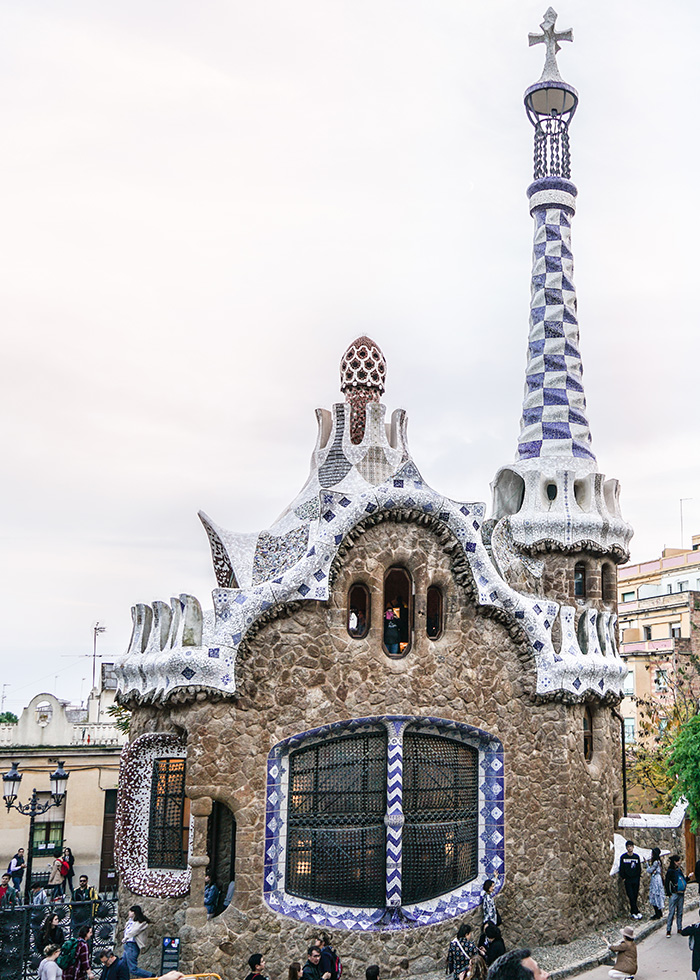
The original structure that Guell and Gaudi had devised was a luxury residential complex with parks and playgrounds. Due to the fantastic atmosphere of these two buildings and the harmony with the surrounding nature, it looks like an entrance to a fairy tale.
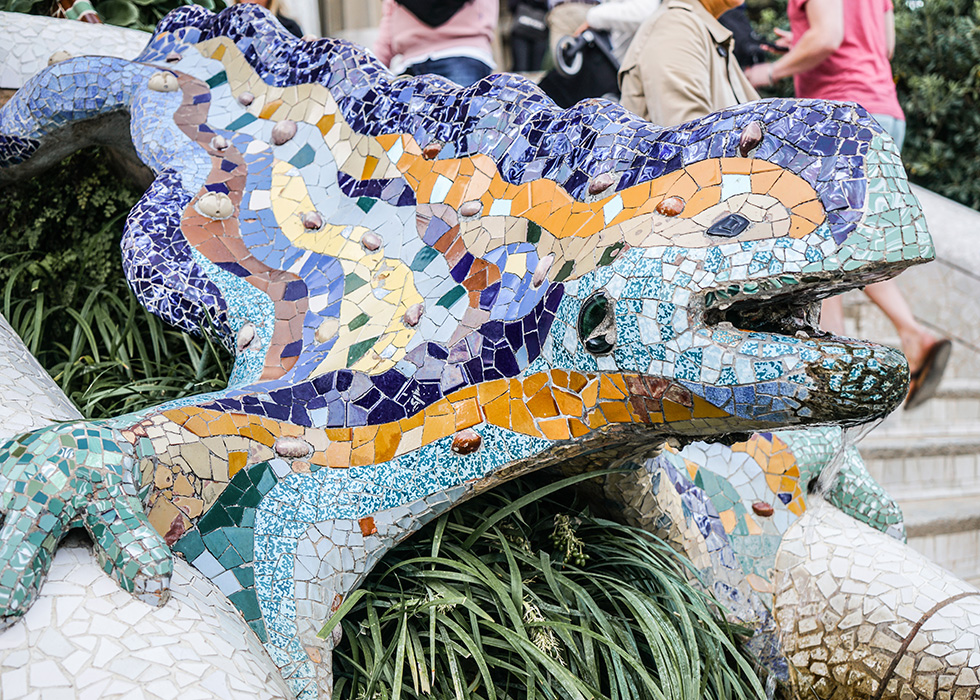
Antonio Gaudí loved to use a technique called trencadis which is a way of decorating the full surface of sculptures and walls with small colofrul ceramic pieces. There are many places with trencadis decoration in Parc Guell but the most famous one is the statue of a lizard. It became a symbol not only of the park but also of Barcelona itself. The water flowing from the mouth of a lizard is a natural rainwater gathered in a special reservoir. Antonio Gaudi was a genious architector and he wanted to use as less artificial structures as possible.
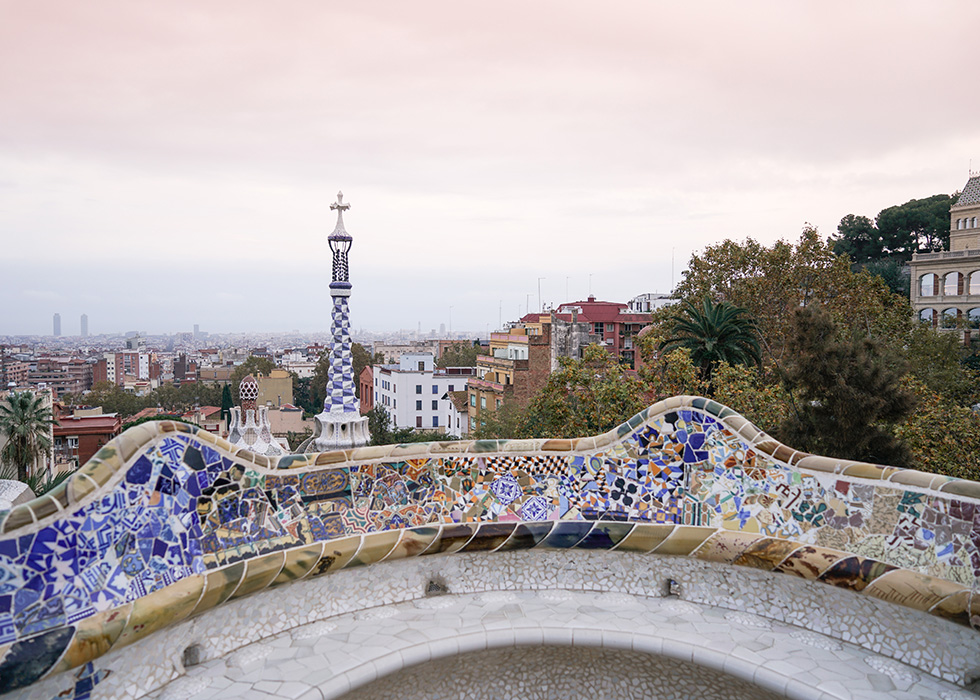
This famous bench shaped like a snake is another symbol of Park Guell. It is listed on the Guinness Book of World Records as the longest bench in the world. It is decorated with colorful ceramic pieces that generate a unique image of the place. Gaudi shaped the chair with consideration of the structure of the human body. Try to sit on the bench and you will feel its convenience while enjoying a stunning view of Barcelona and the Mediterranean sea.
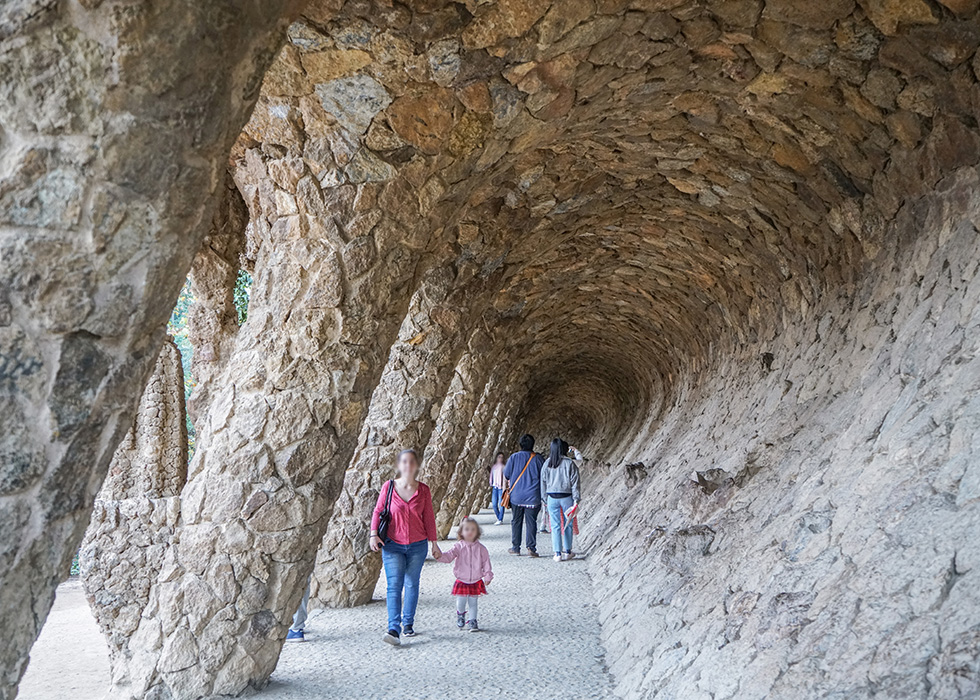
Wave Cave is a very photogenic spot in Parc Guell. Gaudi pursued a nature-friendly architecture and he tried to keep the original territory and surrounding nature. But the mountain where the park is located is geographically sloping and windy, so undermining construction was considered as a necessary procedure. However, Gaudi did his best to save it naturally and used terrain that ended up with these curved pillars and walls.
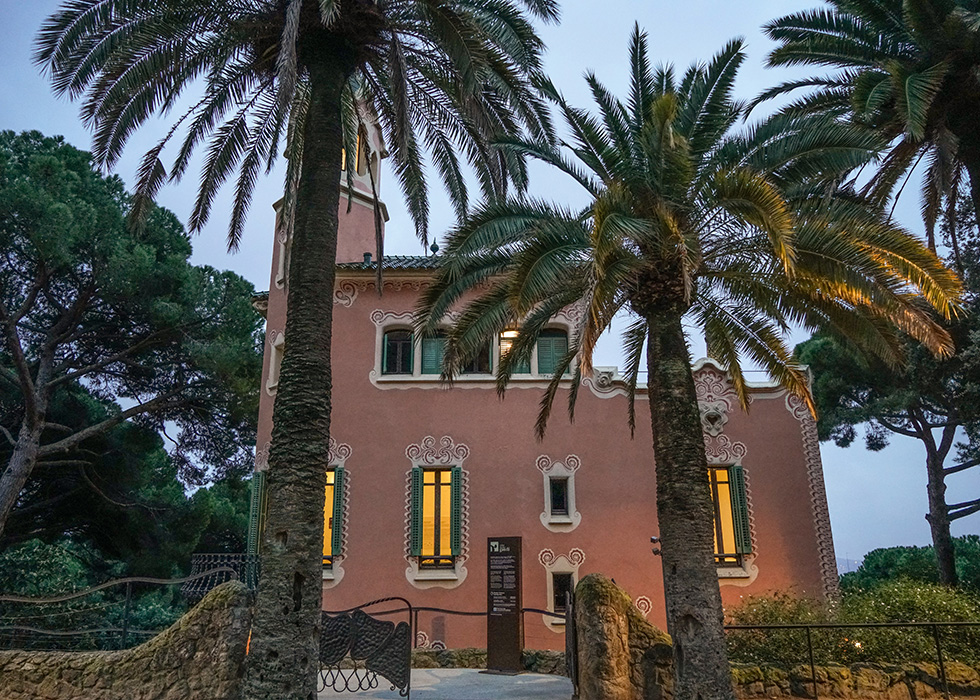
The original plan was a residential complex with 60 houses. When the construction was completed by about 20%, they tried to sell some of the houses and only three of them were sold. And the buyers of those houses were Guell, Gaudi and Gaudi's lawyer. The house where Gaudi lived for 20 years is still preserved and is now being used as Gaudi's museum.
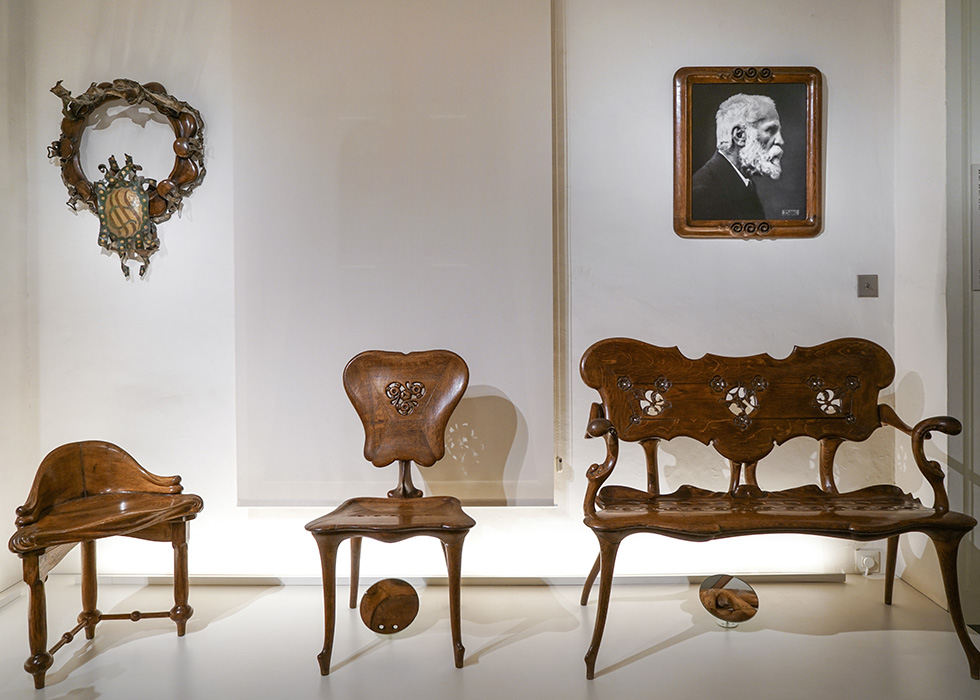
In the museum you can see the furniture such as the bed or the desk that Gaudi used during life as well as the furniture that he designed.
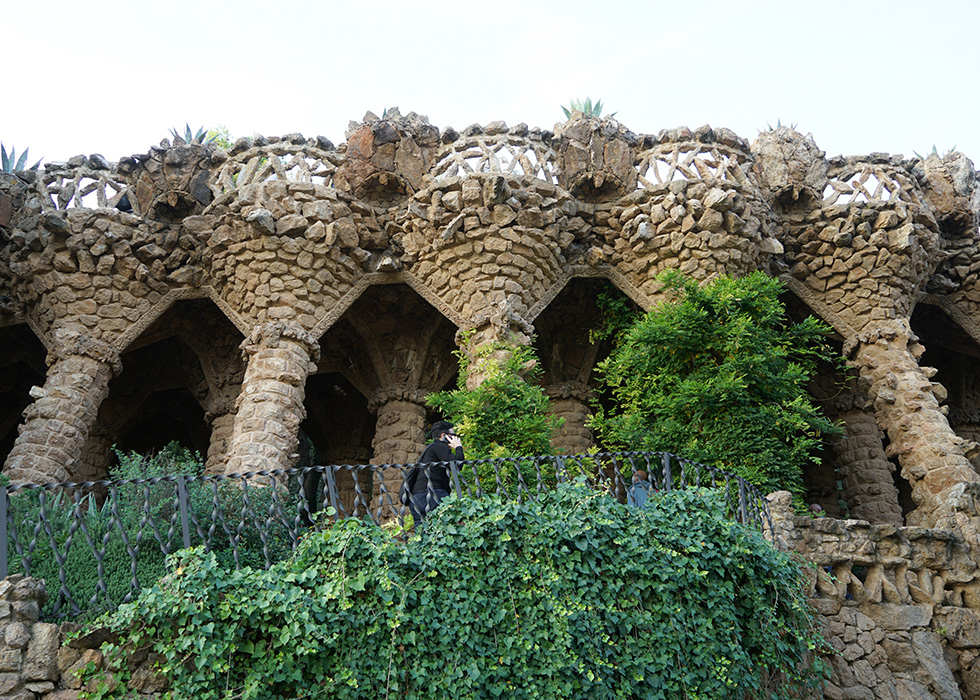
Parc Guell is a public park with free admission although places, where Gaudi's works are shown, has an entrance fee. However, you can also try to get free admission if you enter a paid viewing area (where lizard statue is) before 8:30 in the winter and 8:00 in the summer.
Also, it is located on the mountain which is less accessible than other tourist attractions but these Gaudi's masterpieces can't be missed.
Words by Youra CHOI
Photographs by Yuna LEE
Address : 08024 Barcelona
Opening hours : January-March 8:30-19:00 / April 8:00 - 20:30 / May-August 26th 8:00-21:30 / August 27th -October 27th 8:00-20:30 / November- Decembere 8:30-18:15 / December 25th, 26th, January 1st, 6th 8:30-18:15 (Changeable time schedule)
Admission fee : General 8.75 euros / 7-12 years old 6 euros (Purchase on-site extra 1 euro)
Website : Click here